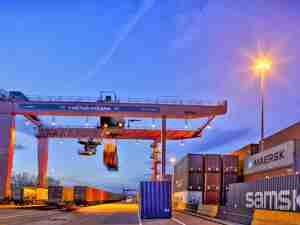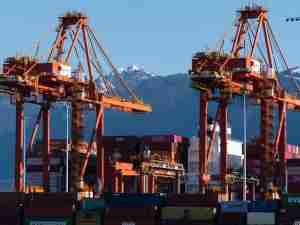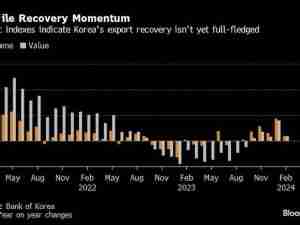Regions around Osaka, Japan’s second biggest population center, struggled to recover from damage left by Typhoon Jebi, which left nine people dead, hundreds of thousands of buildings without power and the area’s main airport closed.
Kansai International Airport, a key transport and cargo hub that lies on an artificial island in Osaka Bay almost directly in the typhoon’s path, remains shut on Wednesday. Jebi, the strongest tropical cyclone to come ashore in 25 years, flooded its runways, and a tanker smashed into the road and rail bridge connecting the airport to the mainland.
About 5,000 people were left stranded at the airport overnight, with passengers now being moved to a nearby airport by boat and bus. All flights serving the airport today are canceled, and road links closed to all but emergency traffic. While the flooding has largely subsided it remains in some places, spokeswoman Izumi Arita said, adding the airport didn’t know when normal operations can resume.
At least nine people in the Kansai region have been killed and 229 injured, according to national broadcaster NHK.
Prime Minister Shinzo Abe, in a series of tweets, hailed the relief operations and said the government will “come together to make every effort to urgently deal with the disaster and restore infrastructure.”
Chip Hub
Kansai International Airport opened in 1994 and sits on reclaimed land in Osaka Bay. It is Japan’s only 24-hour airport, and the third-biggest in the country by passenger numbers after Tokyo’s Haneda and Narita.
The airport is a key cargo hub, particularly for semiconductor parts, which are the biggest export by category. Parts suppliers in the region said they were examining their options.
“If Kansai airport were to remain closed for a week or two, that would have an impact on our exports, so we’d have to consider using other airports,” said Hiroshi Shimizu, a spokesman for Mitsubishi Materials Corp., which exports materials for silicon wafers from Kansai.
Toshiba Memory Corp. and Screen Holdings Co. also said they would consider alternative export routes.
Tourist Drop
The airport is operated by a venture between Vinci Airports SAS and Orix Corp. Despite challenges after its opening, including the need for a government cash injection to tackle greater sinking into the ocean than expected, in recent years it has been a beneficiary of Japan’s tourist boom. Passenger numbers have doubled since 2010.
Typhoon Jebi “will clearly put a dent” in inbound arrival numbers, said Andrew Jackson, head of Japanese equities at Soochow CSSD Capital Markets in Singapore. Japan recorded its slowest growth in tourist numbers in five years in the most recent set of data, as other disasters in western Japan—an earthquake and historic flooding—weighed on travel demand. Shares in Fancl Corp., Kose Corp. and other cosmetics makers fell in Tokyo trading Wednesday.
Power Offline
Almost 600,000 buildings remained without power in Kansai Electric Power Co.’s service area as of 9 a.m, with as many as 2.1 million buildings having lost power at the height of the storm. The utility dispatched 8,000 workers overnight to bring power back to households and businesses.
Many local train lines were shut or running reduced services. Shares in Nankai Electric Railway Co., which operates a train line serving the airport as well as regional lines, fell as much as 5.9 percent, the most in a year. In a statement, the railway said there was no timeframe for restarting the airport line.







